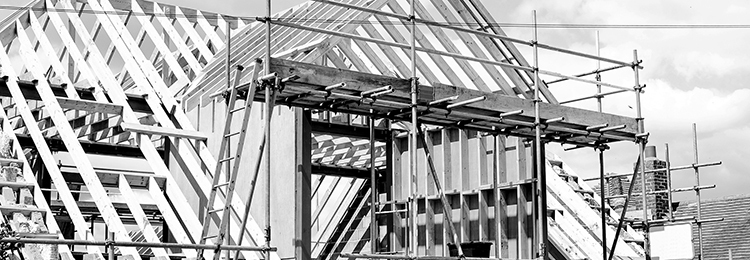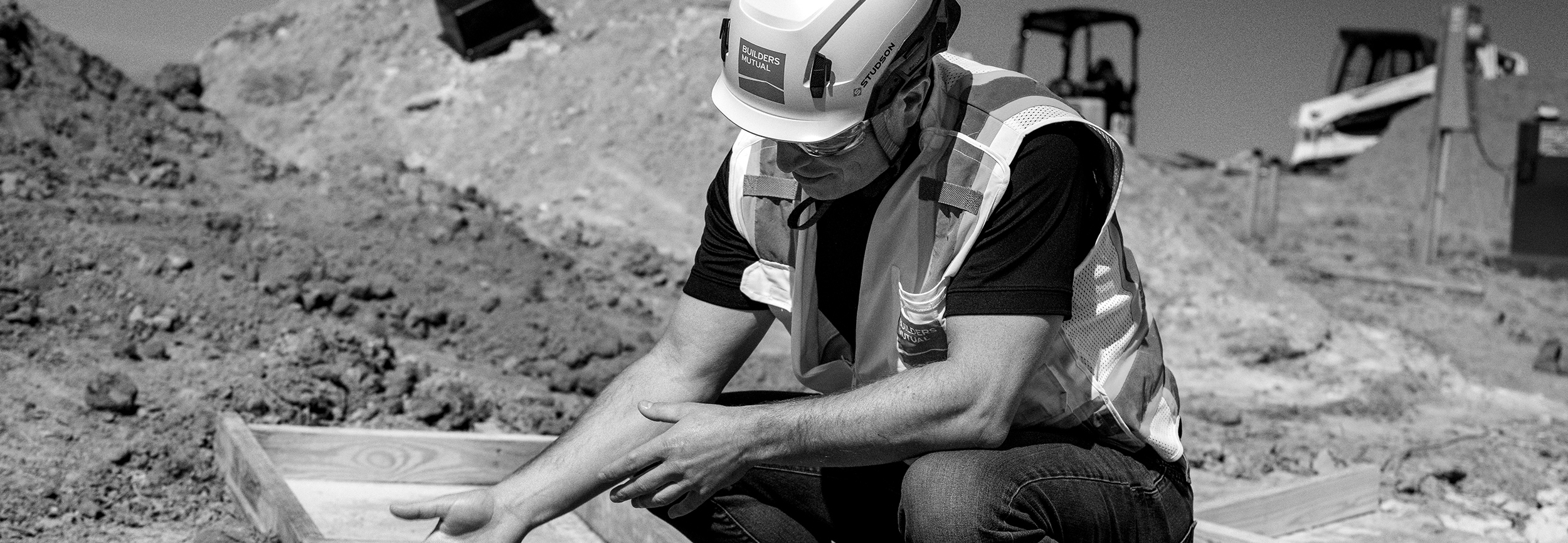Visit any job-site during peak operating hours, and the scene will differ depending on the task at hand. But what you’re sure to observe, no matter what, is the hum, whirrs, and beeps of modern-day machinery, hard at work. Construction equipment is crucial to every crew, helping workers stay efficient, meticulous, and successful in their craft. To keep equipment running effectively and safely, though, proper maintenance is essential.
Wes Sutterfield, a Risk Management Consultant for Builders Mutual, walks us through what taking care of equipment really means for job-sites, workers, and the success of any construction project.
The many stakeholders of maintenance
While perspectives vary, equipment maintenance is a relevant consideration––and responsibility––for everyone who’s involved with a job. Here’s how it impacts different parties:
- Supervisors: For supervisors, keeping equipment in good working order is an essential part of keeping work moving, hitting milestones on time, and making sure that everything is accomplished as efficiently as possible.
- Crews: For crews, maintenance is imperative to keep day-to-day capabilities high and unnecessary safety risks low.
- Business owners: For business owners, maintenance has the ability to make or break their bottom line. Regular, thorough maintenance adds up to projects being completed on time, on budget, and with the option to resell used equipment for top dollar.
The benefits of well-maintained equipment
No matter how you look at it, adequate equipment care is a vital part of maximizing each job’s success. From the smallest warehouse-style forklift to massive excavators completing major dirt work, every job has risks and responsibilities that can benefit from paying careful attention to equipment. The most meaningful benefits of well-maintained equipment include:
- Minimized downtime: When equipment isn’t taken care of, the need for major repairs adds up. Being proactive about maintenance allows you to minimize the time that equipment needs to be formally taken out of commission.
- Less costly repairs: The bigger the equipment issue, the bigger the bill is to have it fixed. Consistent, routine maintenance helps avoid the need for major repairs, keeping costs down and extending the lifespan of machines. If you notice something is missing or awry, it’s in everyone’s best interest to address it sooner rather than later.
- Improved productivity: When maintenance is ignored, equipment oftentimes can’t perform to the best of its ability. Imagine the difference between using a machine that’s caked in mud and dirt versus one that runs without restraint. Ongoing maintenance ensures that whenever a machine is used, it’s operating at full capacity.
- Enhanced safety: When a machine isn’t maintained properly, it can’t work properly, putting operators up against added risks. Keeping up with maintenance gives crews the confidence that machines are going to work just as they expect them to: safely. For more job-site safety tips, check out our Safety Toolbox Talks.
- Maximized profits: Ultimately, all of these benefit the bottom line. Less downtime, major repairs, and accidents mean less-out-of-pocket costs for whatever business is at the helm of the project.
Maximizing the impact of maintenance
Maintenance is a spectrum. To amplify its impact, you’ll need to reflect on what your job-site culture and fleet look like. As you work to improve how your machines are cared for on a day-to-day basis, a few action items to consider include:
- Information access: How are you setting expectations for machine maintenance? Having repeatable procedures in place to express maintenance needs and deadlines to crews will help everyone be on the same page, whether a machine’s being used 10 hours a day, or just here and there. For bigger or more-often used equipment, it might be necessary to provide operators with formal maintenance training—something covered in our WorkSafe training materials.
- Documentation: If it wasn’t documented, it’s safest to assume it wasn’t done. Keeping meticulous records of daily maintenance verifies that equipment is actually being watched. A reliable paper trail is also a must-have in case of a resale or lawsuit.
- Communication: Not all equipment mishaps will be noticed during the inspection window. It’s important to create a culture where anyone can say something if they see something funny happening on a job-site. That might include hearing metal on metal when it isn’t expected, seeing guards missing, spotting kinked chains, or anything else that would indicate a maintenance plan isn’t being followed in the field.
- Ongoing evaluations: The easiest way to motivate crews to stay on top of maintenance is by setting the expectation of continuous monitoring. To boost motivation, be clear about the repercussions when equipment care falls by the wayside. Zooming out, it’s also important to consider maintenance truly just another part of the job––budgeting it into timelines, labor costs, and more.
No matter what construction task is at hand, maintenance is a crucial component of both job safety and overall success. It plays a significant role in staying ahead of the obvious, like the normal wear and tear of machines, as well as the less obvious, such as unexpected malfunctions, machine vandalism, and more.
Having a productive and proactive maintenance program in place empowers you to identify holdups and risks before employees are ever exposed to them. At Builders Mutual, our Risk Management Department is here to support you in the field with assessments, suggestions, and templates you can tailor to your business.
Contact your Builders Mutual Risk Management Consultant today for help assessing and refining the safety of your equipment maintenance program.





 Find an
Find an